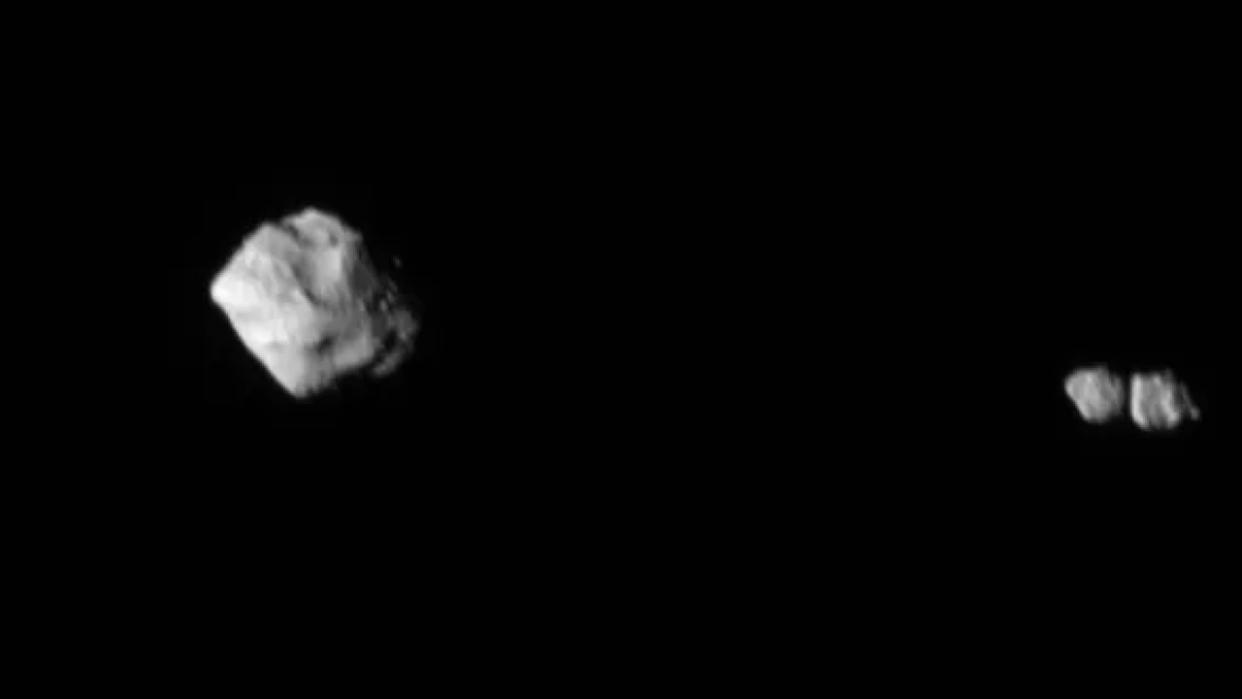Curious asteroid Selam, spotted by NASA's Lucy spacecraft, is a cosmic toddler

When NASA's Lucy mission passed by the near-Earth asteroid Dinkinesh last November, it discovered that Dinkinesh had a companion — a little moonlet that astronomers soon named Selam. And now, scientists have measured Selam's age. Their estimate suggests that tiny Selam separated from its larger partner Dinkinesh just 2 to 3 million years ago, making Selam a toddler — by solar system standards, of course.
"Finding the ages of asteroids is important to understanding them, and this one is remarkably young when compared to the age of the solar system, meaning it formed somewhat recently," Colby Merrill, a doctoral student at Cornell University, said in a statement.
Immediately after Lucy discovered Selam, Merrill and his colleagues set about investigating the newly found asteroid's dynamics and began constructing a model of how Selam orbits Dinkinesh. It seemed likely that Selam consisted of loosely packed debris ejected from Dinkinesh; assuming this origin, the team could use such a model to estimate the asteroid's age.
Related: NASA's Lucy asteroid-hopping spacecraft pins down surface ages of 1st asteroid targets
Traditionally, astronomers date an asteroid by counting the number of impact craters that pockmark its surface; the more craters, the longer that an asteroid has been around to receive those impacts. But Merrill and his colleagues used a different method. They simulated Selam forming from Dinkinesh under a range of different starting conditions and waited until Selam reached the orbit that Lucy glimpsed last November.
The crew simulated 1 million scenarios that resulted in a Selam-like body forming. The median scenario dated Selam as 3 million years old, while the most common result was closer to 2 million. If either of these figures are correct, Selam may actually be younger than Lucy's namesake, the 3.2-million-year old human ancestor Australopithecus afarensis discovered in Ethiopia in the 1970s.
This same method could help date other asteroid binary systems going forward. Dinkinesh is among the estimated 15 percent of near-Earth asteroids that have binary partners. "Obtaining the age of this one body can help us to understand the population as a whole,” Merrill said in the same statement.
Related Stories:
— Meet Dinkinesh: Asteroid targeted by NASA's Lucy spacecraft gets a marvelous name
— The moon is enchanting in new photos from NASA's Lucy asteroid mission
— NASA's Lucy asteroid mission adds 10th space rock target
As for Lucy itself, it has only begun its epic tour of the solar system. The next asteroid on its itinerary, located between Mars and Jupiter, is 52246 Donaldjohanson, which Lucy will visit in 2025. Then, between 2027 and 2033, Lucy will fly past eight Trojan asteroids, bodies that share Jupiter's orbit around the sun
The authors published their work in the journal Astronomy & Astrophysics on April 5.

